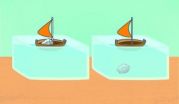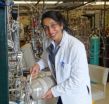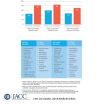(Press-News.org) "Physics summer work, please help!!!," a post on Yahoo! Answers begins. "I cant figure out how to do this anywhere!!! Best answer awarded? Need help immediately!!!!!."
Most of the science and math queries on Yahoo! Answers resemble this one, although some are less hysterical. But they all make people who love science and teaching science cringe. It's not that they think the students are "cheating" by trying to google the answer, but rather that they know students who ask this kind of question are learning nothing and probably confirming a secret conviction that they're bad at science.
The Yahoo! Answers attitude is one of the toughest obstacles science teachers face. It tends to gather speed in high school when students are often defined as smart if they get the right answer quickly — by any means possible. In many cases, the last chance educators have to rescue students is an introductory science class in college.
Unfortunately these are often large lecture classes and research consistently shows traditional lecture courses drive steep attitudinal declines toward learning and problem solving in the sciences.
A three-year evaluation of an innovative course at Washington University in St. Louis that incorporates active-learning techniques but is still taught to large classes suggests the attitudinal decline is not inevitable.
The results of the evaluation, published in July 2, 2014, issue of Physical Review Special Topics, show that Active Physics has the expected benefits in conceptual learning and retains some, although not all, of the attitudinal benefits of small, inquiry-based courses.
Although the results were mixed, Active Physics consistently outperformed traditional lecture courses in conceptual learning and in attitudes toward learning and problem solving, said Regina Frey, the Moog professor of STEM (science, technology, engineering and math) education in chemistry who co-led the evaluation team.
"What's more, she said, Active Physics eliminates what is typically a big gender gap in attitudinal declines in traditional introductory courses. Women's attitudinal scores still decline in Active Physics, but much less than they do in traditional lecture courses.
The bottom line is that active learning works for large classes. "People like to say, "Well, of course you can implement active learning if you have classes of 40 or 50 or a skilled instructor," Frey said. "But they're skeptical that it will work in larger classes. What the evaluation showed is that the gains hold in large classes taught by many instructors over a number of years — if the curriculum is implemented properly.
Getting students off the mental couch
Washington University in St. Louis physics professor Tom Bernatowicz first introduced the Active Physics curriculum to a large introductory class in physics in 2004. Over the next 10 years other physics faculty began to teach Active Physics to equally large classes, and it gradually displaced the sections of the lecture-based introductory course.
Active Physics, a course based on the textbook Six Ideas That Shaped Physics by Thomas A. Moore of Pomona College, has its roots in the 1980s when educators, dissatisfied with lecture courses, became interested models of instruction that require students to take more responsibility for their own learning. Or as Moore puts it, "Physics is not a collection of facts to absorb, but rather a set of thinking skills requiring practice to master."
Every aspect of Active Physics is designed to nudge students to be more engaged in learning and to think more and memorize less. For example, both the Active Physics and the lecture sections of introductory physics include a demonstration of Archimedes principle (see illustration).
Students in the Active Physics class discuss what they think will happen before the demonstration, make a prediction and explain their reasoning to the class. Only once they have a stake in the outcome is the demonstration run. In the traditional lecture class, on the other hand, the instructor performs the demonstration without preamble, explaining the result.
Active Physics homework, homework revision and in-class problems are similarly designed to nudge students to dig into the physics instead of letting it wash over them. and to encourage them to try exploratory rather than rote learning. (For more about this course, see "Physics according to Bernatowicz.")
Losing the attitude
But nobody really knew whether Active Physics achieved the benefits of inquiry or active learning courses taught to much smaller classes.
By fortunate chance the provost's office at Washington University had recently funded a new center called CIRCLE (the Center of Innovation Research on Cognition, Learning and Education) and circle co-directors Regina F. Frey and Mark A. McDaniel teamed up with K. Mairin Hynes and other physics faculty to evaluate Active Physics. This evaluation compared the outcomes of students enrolled in Active Physics and the traditional lecture courses in the years 2009-2010, 2010-2011 and 2011-2012.
To assess how the courses changed attitudes, all of the students completed a 42-item questionnaire called CLASS (Colorado learning attitudes about science survey) that asks students to agree or disagree with statements about their attitudes toward physics and learning about physics.
The CLASS statements can be parsed in different ways to capture different aspects of student learning. The CIRCLE team defined two additional subsets of the statements that captured whether the students' learning approach was rote or conceptual and whether their problem-solving approach was algorithmic or concept based.
Students were asked, for example, whether they agreed or disagreed with the following CLASS statement:
"I do not spend more than five minutes stuck on a physics problem before giving up and seeking help from someone else."
"This statement is included," Frey said, "because many students coming out of high school believe that physics, and to some extent chemistry, is all math, and they have learned to do the problems by rote. That is, if the problem is very similar to ones they've seen before, they can use the procedure they're learned. But if it is superficially different, they can't see the underlying concept, and therefore cannot solve it. Because they think they should be able to look at a problem and solve it right away, they get frustrated."
Another CLASS statement that is equally revealing:
"In doing a physics problem if my calculation gives a result very different from what I'd expect, I'd trust the calculation rather than going back through the problem."
"They really work on this misconception in Active Physics," Frey said. "The students must estimate the answer before they solve the problem, and once they solve the problem they must say whether their answer is reasonable or not and why."
"Some students are naturally active learners," Frey said, "but many are not. So it is our job to teach them how to teach themselves rather than wait to be taught."
"If we want graduates who can really problem solve, innovate, be creative and lead, we have to teach students to be active learners. It's that active learning and complex problem solving we're trying to bring back into introductory courses using techniques such as active learning," Frey said.
INFORMATION: END
'I cant figure out how to do this!'
Can students learn effective learning and problem solving techniques in large introductory science courses? A novel course at Washington University in St. Louis shows it is possible
2014-08-04
ELSE PRESS RELEASES FROM THIS DATE:
Speedier diagnosis of diseases such as cancer likely thanks to new DNA analysis technique
2014-08-04
Researchers from McGill University and the Génome Québec Innovation Centre have achieved a technical breakthrough that should result in speedier diagnosis of cancer and various pre-natal conditions.
The key discovery, which is described online this week in the Proceedings of the National Academy of Sciences (PNAS), lies in a new tool developed by Professors Sabrina Leslie and Walter Reisner of McGill's Physics Department and their collaborator Dr. Rob Sladek of the Génome Québec Innovation Centre. It allows researchers to load long strands of DNA into a tunable nanoscale ...
In defense of mouse models for studying human disorders
2014-08-04
Mouse models of human diseases are essential research tools that are widely used in the medical sciences to increase our understanding of the pathogenesis and pathophysiology of various diseases, and to search for cures. Despite the widespread use of mice as animal models of disease, in 2013, Seok et al. reported that mouse models poorly mimic human inflammatory diseases, such as severe burn injury, sepsis, and acute infection, in terms of gene expression (PNAS 2013, 110(9), 3507-3523), which has been cited more than 400 times since its publication only 18 months ago. Their ...
Sulfur signals in Antarctic snow reveal clues to climate, past and future
2014-08-04
Sulfur signals in the Antarctic snow have revealed the importance of overlooked atmospheric chemistry for understanding climate, past and future.
Eruptions of huge volcanoes, the disruptive weather pattern known as El Niño, and a fire season from hell each left distinctive chemical marks in layers of snow excavated near the South Pole, researchers from the University of California, San Diego and France report in the Proceedings of the National Academy of Sciences the week of August 4.
Sorting out the chemical reactions that must have led to those traces revealed a process, ...
Overtreatment and undertreatment of patients with high blood pressure linked to kidney failure and death
2014-08-04
PASADENA, Calif., August 4, 2014 — The mantra for treatment for high blood pressure has been "the lower, the better," but that goal can potentially put patients at risk of kidney failure or death, according to a Kaiser Permanente study published today in the Journal of the American College of Cardiology.
Researchers examined the electronic health records of nearly 400,000 Kaiser Permanente patients in Southern California who were taking medications to treat high blood pressure from January 2006 through December 2010. They found that:
patients within the range between ...
A polypill strategy to improve global secondary cardiovascular prevention
2014-08-04
WASHINGTON (Aug. 4, 2014) — The polypill, a combination pill taken just once a day that includes key medications for secondary prevention of heart disease, may be an effective low-cost strategy to improve adherence to medication recommendations and reduce costs, according to researchers from Spain and New York, who reviewed research on the polypill.
The review article, A Polypill Strategy to Improve Global Secondary Cardiovascular Prevention, was published online today in the Journal of the American College of Cardiology and will appear in the August 12, 2014 print issue. ...
Protective hinge process enables insulin to bind to cells
2014-08-04
CLEVELAND – August 4, 2014 – Since its landmark discovery in 1922, insulin has improved the health and extended the lives of more than 500 million people worldwide with diabetes mellitus. Yet the question of how this key hormone binds to its target cells in the body’s organs has posed an enduring scientific mystery. A global team of researchers from Cleveland, Australia, Chicago, India and Oregon has made a discovery about insulin and its structure that promises to enable design of new insulin products that will do a better job of regulating the metabolism of patients with ...
Blood-oxytocin levels in normal range in children with autism, study finds
2014-08-04
Autism does not appear to be solely caused by a deficiency of oxytocin, but the hormone's universal ability to boost social function may prove useful in treating a subset of children with the developmental disorder, according to new findings from the Stanford University School of Medicine and Lucile Packard Children's Hospital Stanford.
Low levels of oxytocin, a hormone involved in social functioning, have for years been suspected of causing autism. Prior research seeking a link has produced mixed results. Now, in the largest-ever study to test the purported connection, ...
Epidemic outbreaks caused by environment, not evolution
2014-08-04
Researchers have traced genetic changes in a bacterial pathogen over 450 years, and claim that epidemics of bacterial disease in human history may be caused by chance environmental changes rather than genetic mutations.
In a study published in PNAS, a team led by the University of Warwick analysed 149 genomes of Salmonella enterica serovar Paratyphi A, which is a major cause of enteric fever. Enteric fever is currently estimated at 27 million clinical cases each year, resulting in 200,000 deaths.
Lead author, Zhemin Zhou from Warwick Medical School, said: "When epidemics ...
Study traces evolutionary origins of migration in New World birds
2014-08-04
Every year, millions of birds make the journey from North America to Central and South America for the winter. But the evolutionary origins of this long-distance migration have remained opaque due to the complex geographic distributions of modern and ancient bird ranges.
Now, a team of scientists from the University of Chicago have developed a new method to reveal the ancestral ranges of New World birds, and discovered that bird migration in the Americas evolved in species that resided in North America. Their work also offers evidence that many tropical bird species descended ...
Learning how things fall apart
2014-08-04
CAMBRIDGE, Mass. -- Materials that are firmly bonded together with epoxy and other tough adhesives are ubiquitous in modern life — from crowns on teeth to modern composites used in construction. Yet it has proved remarkably difficult to study how these bonds fracture and fail, and how to make them more resistant to such failures.
Now researchers at MIT have found a way to study these bonding failures directly, revealing the crucial role of moisture in setting the stage for failure. Their findings are published in the journal Proceedings of the National Academy of Science ...
LAST 30 PRESS RELEASES:
Archaeologists use AI to create prehistoric video game
Mitochondria migrate toward the cell membrane in response to high glucose levels
Tiny viral switch offers hope against drug-resistant bacteria
Most parents aware of early peanut introduction guidelines, but confused about details
HPV vaccine can protect against severe lesions of the vulva and vagina
Virtual care provision and emergency department use among children and youth
Quadrivalent HPV vaccine and high-grade vulvovaginal lesions
Insights into dry eyes gained from stem cell-derived tear glands
Researchers identify 166 human pluripotent stem cell lines available for use in clinical applications
Europa Clipper instrument uniquely observed interstellar comet 3I/ATLAS
UN University Report challenges climate change as sole trigger of Syrian Civil War, exposing governance failures in drought response
Real estate investment trust (REIT) acquisition associated with hospital closure and bankruptcy
New Raman imaging system detects subtle tumor signals
Boston Children’s receives a $7.5 million grant from Aligning Research to Impact Autism (ARIA) to provide clinical research coordination for the IMPACT Network
Spray-on antibacterial coating offers new protection for plants against disease and drought
ESMT Berlin study: What makes a first offer successful in negotiations
Groundbreaking ceremony marks the beginning of CTAO-South Array construction in Chile
Why swearing makes you stronger
What prevents more cancer patients from enrolling in potentially life-saving clinical trials?
UK’s worst-case climate risks laid bare for lawmakers
A decline in churchgoing linked to more deaths of despair
TAMEST announces Maralice Conacci-Sorrell, Ph.D., UT Southwestern Medical Center, as 2026 Mary Beth Maddox Award & Lectureship Recipient
Global study to evaluate whether dengue outbreaks can be anticipated earlier
Chonnam National University researchers propose innovative voltage-loop control for power factor correction
Accelerating next-generation drug discovery with click-based construction of PROTACs
Detecting the hidden magnetism of altermagnets
$7M gift supports health research, engineering and athletics at UT San Antonio
NU-9 halts Alzheimer’s disease in animal model before symptoms begin
Hospitals acquired by real estate investment trusts associated with greater risk of bankruptcy, closure
City of Hope scientists study rare disorder to uncover mechanism and hormone regulation underlying fatty liver disease and sweet aversion
[Press-News.org] 'I cant figure out how to do this!'Can students learn effective learning and problem solving techniques in large introductory science courses? A novel course at Washington University in St. Louis shows it is possible



